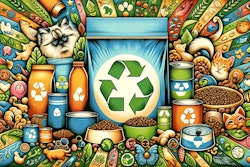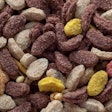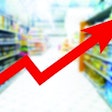
As cat ownership in several countries continues to grow — or at least remain stable in the face of flat or declining dog ownership or pet ownership overall — manufacturers and marketers of food, treats and other products for cats seem ready to pounce on a market opportunity, if they’re not already in full stride.
Many cat owners would say it’s about time; in surveys from Packaged Facts going back several years, they’ve expressed dissatisfaction with the product selection and quality for their cats, especially compared to what’s long been available for dogs. For example, a survey conducted in 2024 showed 43% of U.S. cat owner respondents saying they feel treated like second-class citizens by pet food and other product manufacturers.
Among the companies seeking to change that dynamic and improve their standing among cat owners (and, let’s face it, increase revenues), brands offering alternative formats of cat food seem to be making inroads, according to Packaged Facts’ May 2024 report on the U.S. cat market. Shannon Landry, pet brand manager for Packaged Facts, shared highlights in Pets International’s November 2024 issue.
Dry cat kibble usage declines as other formats grow
While traditional food formats like dry kibble still dominate in terms of usage by U.S. cat owners, its share is declining as other formats increase in usage. The Packaged Facts report showed 79% of U.S. cat owners using dry kibble in 2024, followed by 64% feeding wet canned cat food. (The percentages total to more than 100 likely because cat owners feed multiple formats — and in fact, they seem to feed a notable variety.)
The dry cat food percentage is large, yet consider: In fall 2021, it was at 93%. That’s a 14-point drop in less than three years. Meanwhile, feeding of wet cat food continues to rise; it was at 59.1% in 2021. Even more interesting, the alternative formats all now reach at least 10% usage rates — or very close to it for freeze dried/air dried, at 9%. Raw and fresh frozen both stood at that 10% rate in 2024, while fresh refrigerated reached 14%, and toppings/mixers/add-ins, 26%. (Also interesting: Customized formulations now are fed by 10% of U.S. cat owners.)
With its 2021 report, Packaged Facts didn’t release much information about all the newer formats, so it’s difficult to compare usage rates between then and now, except in one category: fresh pet food, which at the time, the market research firm defined as refrigerated or frozen. And the data point it reported then, a 4% usage rate, applied nearly entirely to dog food. Meaning that for cats, feeding of refrigerated or frozen cat food has gone from almost nil to 10-14% in, again, less than three full years.
Alternative pet foods increasing in sales, too
These usage rates jibe with sales reports from other sources like NielsenIQ (NIQ), which reported in fall 2024 that for both cat and dog food, the newer formats all increased in both dollars and units sold over the 52-week period ending June 15, 2024. Specifically, fresh/frozen pet food grew 20.2% in sales and 17.7% in units; partial freeze dried, 8.5% and 2.2% respectively; 100% freeze dried, 12.9% and 12.8%, respectively; and meal enhancers, 10% and 2.2%, respectively.
Obviously, the NIQ categories aren’t quite the same as Packaged Facts’, and the fact that the NIQ sales data includes dog food means this isn’t an apples-to-apples comparison. Yet considering that dog food sales overall have been flat or growing only slightly, compared to cat food sales, I can’t help wonder if the sales growth for the cat food categories alone would be even higher.

















